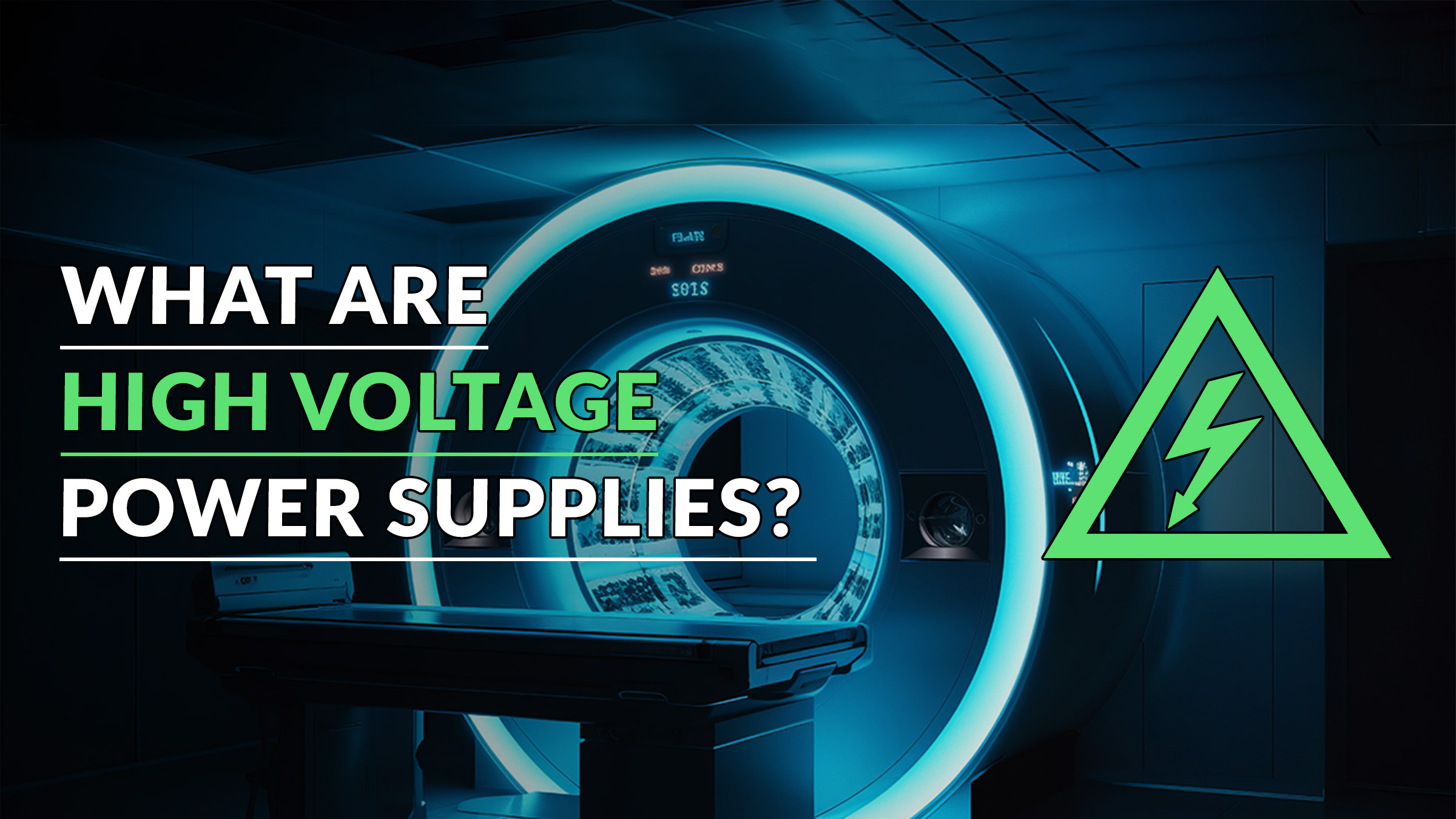
My 10 kV power supply has an isolation rating of only 3500V, why is that?
This is a common initial reaction when reviewing the data sheet of a high voltage power supply. This Blog intends to explain why! First, an explanation of the basic function blocks of the supply should help. In a typical DC to high voltage DC converter, the DC input feeds an inverter, which drives a step-up high voltage transformer, which drives a rectifier.
See Fig. 1
If this was the extent of the circuit, then the isolation rating of the supply should be higher than the high voltage output of the supply. However, here’s where things get a little more interesting. The high voltage output of the transformer is then typically used to drive a Cockroft-Walton voltage multiplier circuit, which does just that; it multiplies the output of the transformer.
See Fig. 2.
For example, a power supply with a 10 kV output may have a quadrupler multiplier in it, such that the transformer is only outputting 2500Vpk. The transformer is never directly subjected to the 10 kV, so 10 kV worth of isolation is not required. In fact, if you perform a typical hi-pot test on a 10 kV supply, there’s a good chance you’re going to blow out the transformer. Certainly any power supply subjected to this test should be considered damaged (unless it is specifically rated for it).
So what does the isolation rating mean to me?
It means that you are able to bias the output section of the power supply output return to a reference voltage other than ground, positive or negative, within the isolation rating spec. The transformer provides the galvanic isolation.
Why would I want to do that?
Well, one reason is to create a simple bipolar “four-quadrant” (see Note 1) high voltage power supply using just two small, low cost high voltage modules. If the first module is set for say, -2kV, the output of a second module can be tied, or referenced, to the –2 kV output. If a 4 kV module is selected, that module is controlled from 0 to 4 kV, it will generate a voltage that can be linearly adjusted from -2 kV to +2 kV without any major non-linearity, delays or hiccups as it passes from negative to positive.
This approach avoids the expense and space of a typical off-the-shelf bi-polar power supply, providing a cost-effective solution for OEM designs. (Note: never leave the output section floating with the power on, because the output may electrostatically charge to a voltage in excess of the isolation rating and cause damage.)
See Fig. 3.
Bipolar high voltage power supplies are often used in electrostatic applications, swinging from negative to positive high voltage is often desired. Designing with isolated high voltage modules make it simple, low cost and easy.
How do I test the isolation without potentially damaging the power supply?
Since the transformer is providing the galvanic isolation, with the unit turned off, connect the positive and negative inputs together, and connect to ground or through a current meter to measure leakage current (typically in the low nano-amp range). Now connect the positive and negative outputs together.
Slowly apply a high voltage source to the output of the Unit Under Test (UUT). As you increase the voltage up to the isolation rating (never above unless it is intended to be a destructive test, and follow all high voltage safety precautions), you can.... 1, Verify that the UUT’s transformer does withstand the voltage and 2, measure the leakage current across the galvanic isolation barrier.
With the high voltage off, you can also measure the input to output coupling capacitance (typically in the pico-Farad range) with this configuration by connecting a capacitance meter from the input pins to the output pins (be sure to null out parasitics and do not touch both leads).
See Fig. 4.
The input to output galvanic isolation feature of these low cost, off-the-shelf, high voltage “building block” modules provide a versatile and creative option to solving bipolar or multiple output high voltage requirements.
Note 1: To operate in all four quadrants of the Cartesian Coordinate System, resistive elements (either internal or external) are used to sink current.








